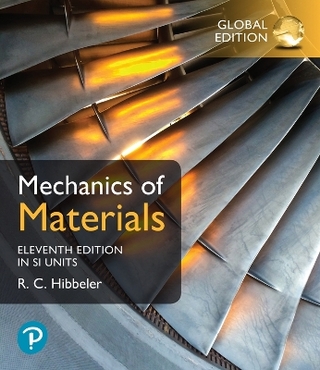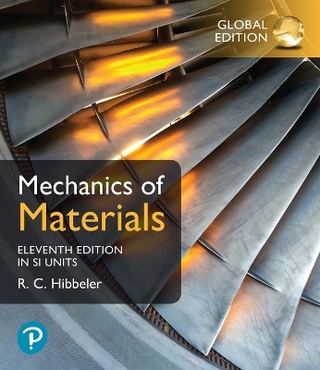
Adaptive Structures – Engineering Applications
Wiley-Blackwell (Hersteller)
978-0-470-51206-7 (ISBN)
- Keine Verlagsinformationen verfügbar
- Artikel merken
Adaptive structures have the ability to adapt, evolve or change their properties or behaviour in response to the environment around them. The analysis and design of adaptive structures requires a highly multi-disciplinary approach which includes elements of structures, materials, dynamics, control, design and inspiration taken from biological systems. Development of adaptive structures has been taking place in a wide range of industrial applications, but is particularly advanced in the aerospace and space technology sector with morphing wings, deployable space structures; piezoelectric devices and vibration control of tall buildings. Bringing together some of the foremost world experts in adaptive structures, this unique text:* includes discussions of the application of adaptive structures in the aerospace, military, civil engineering structures, automotive and MEMS.* presents the impact of biological inspiration in designing adaptive structures, particularly the use of hierarchy in nature, which typically induces multi-functional behavior.* sets the agenda for future research in adaptive structures in one distinctive single volume.
Adaptive Structures: Engineering Applications is essential reading for engineers and scientists working in the fields of intelligent materials, structural vibration, control and related smart technologies. It will also be of interest to senior undergraduate and postgraduate research students as well as design engineers working in the aerospace, mechanical, electrical and civil engineering sectors.
The Editors are from the Departments of Aerospace and Mechanical Engineering at the University of Bristol. Friswell is the Sir George White Professor of Aerospace Engineering and currently a Royal Society-Wolfson Research Merit Award Holder. Bond, Drinkwater, Wagg and Weaver are all currently EPSRC Advanced Research Fellows. The editors have significant publication records in areas related to adaptive structures, which can be viewed from here: http://www.men.bris.ac.uk/ and http://www.aer.bris.ac.uk/. They are all involved in a significant amount of funded research projects (see http://www.epsrc.ac.uk/) - for example the new Bristol Laboratories for Advanced Dynamic Engineering (BLADE) funded by a recent GBP15 million JIF award (GR/R51261/01) as well as numerous other research projects funded by the EPRSC and industry. Inman is the George R. Goodson Professor of Mechanical Engineering, and Director of the Center for Intelligent Material Systems and Structures at Virginia Tech, USA. He is also the Benjamin Meaker Visiting Professor at Bristol.
List of Contributors. Preface. 1 Adaptive Structures for Structural Health Monitoring (Daniel J. Inman and Benjamin L. Grisso). 1.1 Introduction. 1.2 Structural Health Monitoring. 1.3 Impedance-Based Health Monitoring. 1.4 Local Computing. 1.5 Power Analysis. 1.6 Experimental Validation. 1.7 Harvesting, Storage and Power Management. 1.8 Autonomous Self-healing. 1.9 The Way Forward: Autonomic Structural Systems for Threat Mitigation. 1.10 Summary. Acknowledgements. References. 2 Distributed Sensing for Active Control (Suk-Min Moon, Leslie P. Fowler and Robert L. Clark). 2.1 Introduction. 2.2 Description of Experimental Test Bed. 2.3 Disturbance Estimation. 2.4 Sensor Selection. 2.5 Conclusions. Acknowledgments. References. 3 Global Vibration Control Through Local Feedback (Stephen J. Elliott). 3.1 Introduction. 3.2 Centralised Control of Vibration. 3.3 Decentralised Control of Vibration. 3.4 Control of Vibration on Structures with Distributed Excitation. 3.5 Local Control in the Inner Ear. 3.6 Conclusions. Acknowledgements. References. 4 Lightweight Shape-Adaptable Airfoils: A New Challenge for an Old Dream (L.F. Campanile). 4.1 Introduction. 4.2 Otto Lilienthal and the Flying Machine as a Shape-Adaptable Structural System. 4.3 Sir George Cayley and the Task Separation Principle. 4.4 Being Lightweight: A Crucial Requirement. 4.5 Coupling Mechanism and Structure: Compliant Systems as the Basis of Lightweight Shape-Adaptable Systems. 4.6 Extending Coupling to the Actuator System: Compliant Active Systems. 4.7 A Powerful Distributed Actuator: Aerodynamics. 4.8 The Common Denominator: Mechanical Coupling. 4.9 Concluding Remarks. Acknowledgements. References. 5 Adaptive Aeroelastic Structures (Jonathan E. Cooper). 5.1 Introduction. 5.2 Adaptive Internal Structures. 5.3 Adaptive Stiffness Attachments. 5.4 Conclusions. 5.5 The Way Forward. Acknowledgements. References. 6 Adaptive Aerospace Structures with Smart Technologies - A Retrospective and Future View (Christian Boller). 6.1 Introduction. 6.2 The Past Two Decades. 6.3 Added Value to the System. 6.4 Potential for the Future. 6.5 A Reflective Summary with Conclusions. References. 7 A Summary of Several Studies with Unsymmetric Laminates (Michael W. Hyer, Marie-Laure Dano, Marc R. Schultz, Sontipee Aimmanee and Adel B. Jilani). 7.1 Introduction and Background. 7.2 Room-Temperature Shapes of Square [02/902]T Cross-Ply Laminates. 7.3 Room-Temperature Shapes of More General Unsymmetric Laminates. 7.4 Moments Required to Change Shapes of Unsymmetric Laminates. 7.5 Use of Shape Memory Alloy for Actuation. 7.6 Use of Piezoceramic Actuation. 7.7 Consideration of Small Piezoceramic Actuators. 7.8 Conclusions. References. 8 Negative Stiffness and Negative Poisson's Ratio in Materials which Undergo a Phase Transformation (T.M. Jaglinski and R.S. Lakes). 8.1 Introduction. 8.2 Experimental Methods. 8.3 Composites. 8.4 Polycrystals. 8.5 Discussion. References. 9 Recent Advances in Self-Healing Materials Systems (M.W. Keller, B.J. Blaiszik, S.R. White and N.R. Sottos). 9.1 Introduction. 9.2 Faster Healing Systems - Fatigue Loading. 9.3 Smaller Size Scales. 9.4 Alternative Materials Systems - Elastomers. 9.5 Microvascular Autonomic Composites. 9.6 Conclusions. References. 10 Adaptive Structures - Some Biological Paradigms (Julian F.V. Vincent). 10.1 Introduction. 10.2 Deployment. 10.3 Turgor-Driven Mechanisms. 10.4 Dead Plant Tissues. 10.5 Morphing and Adapting in Animals. 10.6 Sensing in Arthropods - Campaniform and Slit Sensilla. 10.7 Developing an Interface Between Biology and Engineering. 10.8 Envoi. Acknowledgements. References. Index.
| Erscheint lt. Verlag | 11.5.2007 |
|---|---|
| Verlagsort | Hoboken |
| Sprache | englisch |
| Maße | 158 x 234 mm |
| Gewicht | 582 g |
| Themenwelt | Technik ► Maschinenbau |
| ISBN-10 | 0-470-51206-7 / 0470512067 |
| ISBN-13 | 978-0-470-51206-7 / 9780470512067 |
| Zustand | Neuware |
| Haben Sie eine Frage zum Produkt? |
aus dem Bereich

